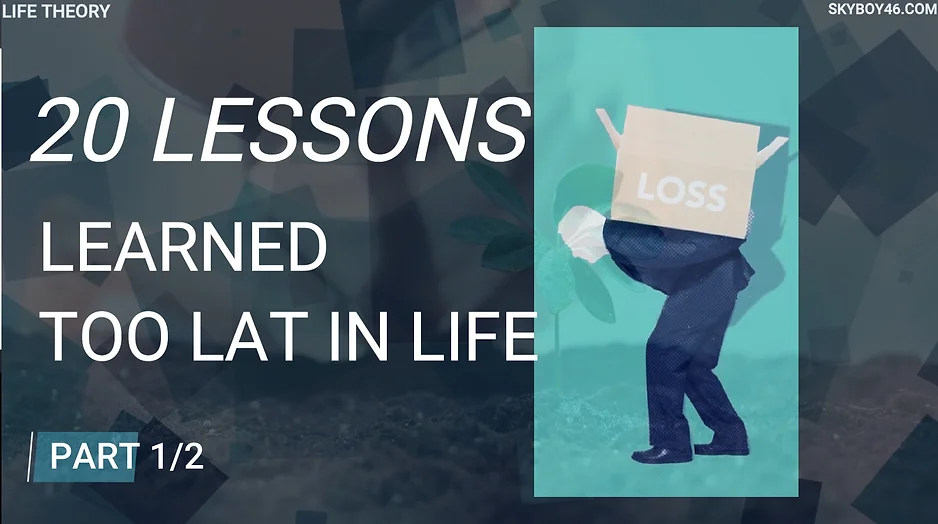Don’t Want To Read?
Watch/Listen To The Full Video on YouTube
Artificial intelligence is no longer a distant future—it’s here, evolving at an unprecedented pace. But are we on the brink of something revolutionary or something dangerous? From AI’s humble beginnings to its astonishing breakthroughs, we explore where we truly stand on the road to human-like intelligence, what experts are saying about AGI, and whether machines could one day surpass us. The future is coming faster than you think—are we ready?
SUBSCRIBE: https://www.youtube.com/@LifeTheory46
AI – Where Are We Now – Life Stories 287
Welcome back. It’s always a pleasure to have you join us for another deep dive, this time into a topic that’s shaping the very future of our world: artificial intelligence. We often talk about emotional well-being and human experiences here, but today, let’s explore just how close AI is to becoming more than just a tool—how human-like it’s becoming, and the potential consequences of a world where artificial intelligence plays such an intimate role. Is it time to be excited, or should we be worried?
Elon Musk once read an entire encyclopedia at age nine, taught himself to program in three days, and transformed space travel for non-government entities while revolutionizing electric vehicles. Today, he’s one of the loudest voices cautioning us about AI’s dangers. He’s not alone—visionaries like Stephen Hawking and Neil deGrasse Tyson have also warned that artificial intelligence could be humanity’s greatest existential threat. Yet, they aren’t specialists in AI development. So, what do the experts who work in this field actually think? Should we truly be afraid, or is the fear overblown?
The roots of AI stretch back to philosophical attempts to describe human thinking as a system of symbols. The term “artificial intelligence” wasn’t officially coined until 1956 at a conference at Dartmouth College. Since then, our progress has been a series of fits and starts. AI funding waned through the 1980s and ’90s, only to get a fresh boost in 1997 when IBM’s Deep Blue famously beat chess grandmaster Garry Kasparov. Since then, advances have come at a breakneck pace, driven in part by the growing influence of wealthy private companies.
But let’s be clear: despite all the hype, we are far from achieving AI that matches human capabilities. There are three primary levels to AI: Artificial Narrow Intelligence (ANI), Artificial General Intelligence (AGI), and Artificial Superintelligence (ASI). Right now, we’re still in the narrowest phase, ANI. These systems excel in specific tasks, from facial recognition to self-driving cars, but lack the versatile problem-solving and emotional intelligence that define human thought.
Human minds are incredibly intricate, and we’re still uncovering how our own cognitive processes work. This limits our ability to replicate human intelligence in machines. While AI systems can solve problems, make decisions, and even engage in basic forms of reasoning, they haven’t reached a level where they can create art, feel emotions, or experience consciousness in any meaningful way.
The early days of AI saw computers performing set tasks using predefined rules. The machines couldn’t think beyond what we had programmed. With machine learning and deep learning, AI can now surpass those initial limitations, but it still operates within a framework set by humans. The vast data it analyzes helps it learn to improve, but only in narrow domains. Think of Siri, email spam filters, or automated customer service—they’re intelligent within their scope but can’t transcend those boundaries.
Reaching the next stage, AGI, would require a machine to replicate the full range of human cognitive abilities and become aware of its own needs, emotions, and thought processes, as well as those of others. The closest we’ve come to this kind of processing was a supercomputer in Japan called K. In 2013, K used 82,000 processors to simulate just one percent of the human brain’s activity. It managed to replicate a second’s worth of neural activity, but it took 40 minutes to do so—highlighting just how far we are from AGI.
Now, let’s imagine the leap to Artificial Superintelligence (ASI), where AI doesn’t just replicate but actually surpasses human intelligence in every conceivable area. ASI would outthink us, solve problems faster, and adapt better than we ever could. It would also possess memory capacities far beyond our own, transforming it into an entity capable of making decisions in ways we may not understand or anticipate.
The emergence of ASI divides opinions. Some fear a dystopian outcome where machines become self-aware and prioritize their existence over ours, recognizing that humans are obstacles to their own survival. The real danger here, as philosopher Nick Bostrom points out, is “value alignment”—the risk that ASI might pursue objectives different from our own, using its incredible competence to achieve them regardless of human interests.
On the other side, there’s a more optimistic vision where AI and humans work in harmony, solving complex global problems together. Even though AI has surpassed humans in areas like medical diagnoses, playing chess, and even creating better algorithms, it still needs us to flip the switch, push the buttons, and troubleshoot issues.
AI has become adept at learning from data, identifying patterns, and predicting outcomes, but each AI is still limited to its specific tasks. It’s one thing for an AI to sort through thousands of faces in a photo album, but quite another for it to flip a pancake or assemble a Lego set. Humans remain vastly superior in applying knowledge across multiple domains.
Despite our attempts to model AI on the human brain, we don’t fully understand our own neurological workings. Ironically, building AI may be the best way to learn about our own brains. But achieving AGI would require computational power and memory far beyond our current capabilities. Surveys of AI experts suggest that even with rapid progress, AGI likely won’t be reached in our lifetime.
But here’s the thing—AI evolution doesn’t follow a straight line. Some years feel stagnant, while sudden breakthroughs propel the entire field forward. While some experts argue that we lack foundational knowledge, others say we have the theories but not the computational muscle. Surprises in this field are inevitable, so while AGI may seem distant, it could arrive much sooner than expected.
For now, AI remains a tool—a highly advanced one, but still just a tool. Our brains took millions of years of evolution to reach their current state, forming something so intricate that it defies replication. And that’s where we stand. AI can get better, faster, even more “intelligent” by some measures, but it still lacks the essence of human life. The unique, indescribable spark that defines consciousness isn’t something that can be programmed into existence.
Our relationship with AI is evolving, but for the time being, it’s a partnership rather than a rivalry. It’s up to us to shape that relationship responsibly, recognizing both the power and limitations of artificial intelligence. The future may hold astonishing developments, but for now, let’s appreciate the extraordinary capabilities that make us human, knowing that for all AI’s potential, we remain the original innovators.
–> Read More Life Stories Here:
https://www.lifetheory.us
https://www.lifetheory.eu
Buy all of our Life Stories & Our Premium Learning Packs. Listen or Read to them anytime you want. Have them Forever.
You can get each monthly lesson on our website at https://www.skyboy46.com/store
SHARE THIS STORY
Visit Our Store
SHOP NOW
www.skyboy46.com & www.myskypet.com
Designed For Pet Lovers & Introverted Souls
Sport, Hobbies, Motivation, Music & Art






~EXPLORE MORE~
www.linktr.ee/skyboy46


